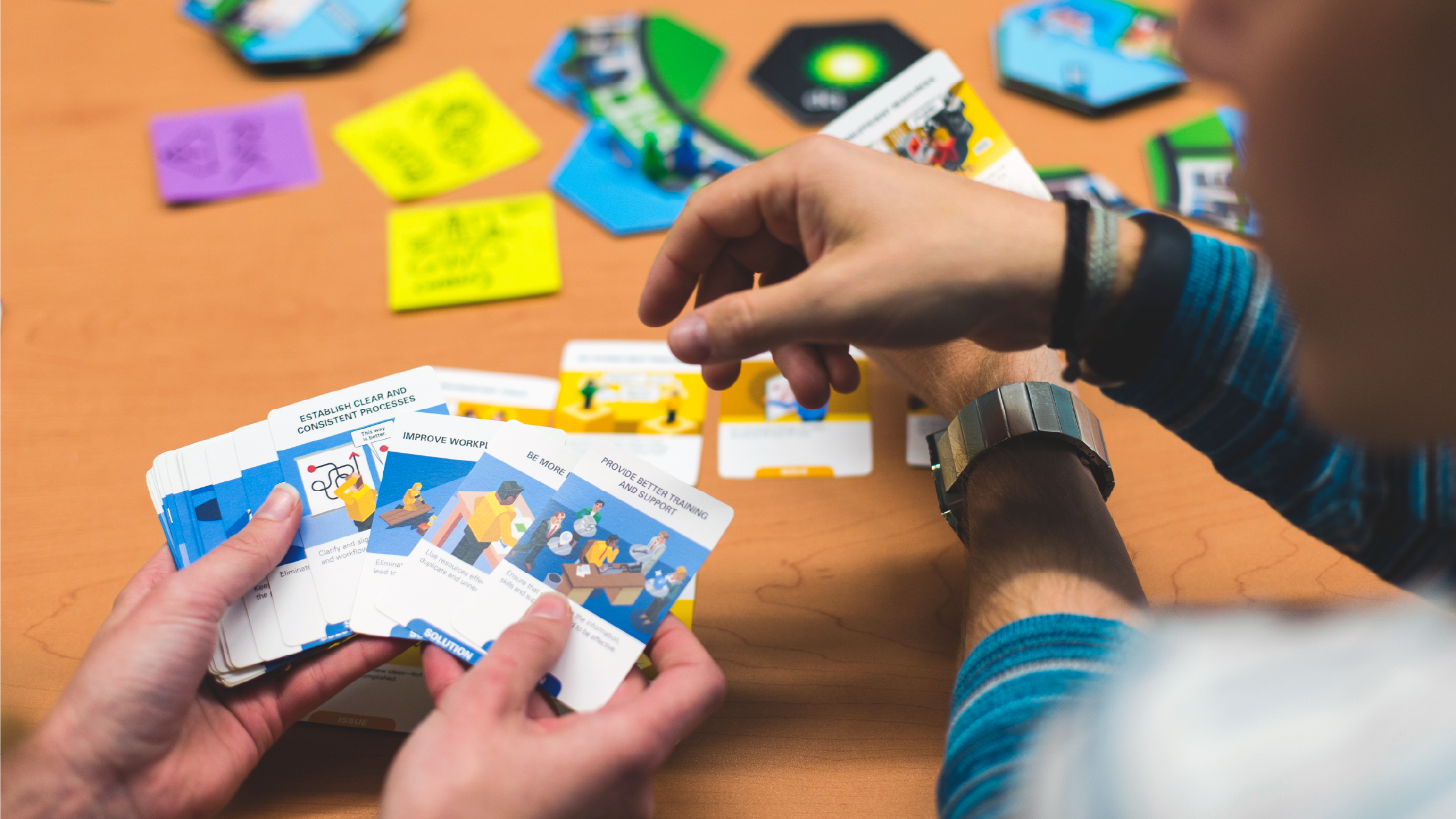Engaging and interactive, games have the power to bust through barriers and open the door to organizational change. Here’s why they’re so effective.
If you want to learn to play the guitar, which method will get you there faster? Reading a book about playing the guitar or picking up a guitar and just playing it (preferably in a soundproofed room where you won’t be bothering your neighbors)?
The answer will come as no surprise.
While the book might provide valuable theory, fingerings, and technique, you won’t know how it feels to play a guitar until you put your fingers on the frets and start strumming.
A Safe Place to Take Risks
Likewise, if you have identified opportunities for growth and learning in your organization, providing a “sandbox” for your people to practice, make mistakes, and see results is invaluable.
That’s where gamification—strategically bringing in elements of game play in a work environment to drive engagement, change behaviors, or open up new ways of thinking—comes in.
XPLANE has been creating one-of-a-kind, thought-provoking games for our clients for years, targeting many different learning outcomes and experiences, from creating new ways of working or building a culture of smart risk-taking to achieving alignment and shifting mindsets.
Three Ways Games Move Goals Forward
In our years of creating games for clients, we’ve been excited to see game play propel teams toward change by opening up new ways of thinking, communicating, and working.
Here are three ways games foster growth and can fast-forward your organizational goals.
1. Games create a safe learning environment
One of the most powerful aspects of playing games at work is the safe environment it creates for employees to experiment and learn. In controlled and gamified scenarios, employees are more willing to take risks because they know there are no real-world consequences—and they can always try again. That’s because games foster a culture of experimentation. Incorporating learning scenarios into a group board game setting also provides a safe place for employees to ask questions—without the shame or fear that can arise in normal learning environments.
2. Games rapidly enforce new habits and ways of working
The ability to quickly adapt to new processes and technology is paramount to success in our fast-paced business environments. Games are a great way to accelerate the formation of new habits and reinforce ways of working. Gamified scenarios can be designed to reward desired behaviors and give employees a fun, memorable experience that can help solidify those behaviors faster. Games can also be designed for continuous engagement—something employees come back to repeatedly over an extended period of time. This can increase the likelihood that new information, skills, or behaviors will be retained.
3. Games take people out of the typical day-to-day grind
Heads-down monotony in the workplace can lead to burnout and decreased productivity. Giving employees the opportunity to set aside their daily responsibilities and play a game can give them a welcome mental break. Sitting around a table to play a game with coworkers can help with team building, foster collaboration, and create camaraderie. The basic mechanics of game play also foster motivation through rewards and give people a sense of achievement, bringing out spirited competition.
Games Move the Needle on Culture
Games can positively influence any number of organizational goals or challenges you may be facing.
One of our clients, a Fortune 1000 public utility company, for instance, noticed a lack of risk-taking and competitive thinking from their managers and leaders. So we helped them create a fun, engaging game experience to change their culture.
This experience allowed the company’s leaders to get out of the rut of their daily work and start thinking differently about competition in the field.
"XPLANE's board game created an engaging, interactive experience that allowed us to draw out important lessons and critical insights."
Principal HR & Organizational Effectiveness Partner
The game created alignment, cohesion, and a shared vision among leadership, and the concept was incorporated into the organization’s High-Performance Leaders executive training at the CEO’s request.
Give Games a Try!
If you’re struggling to get alignment, need support to tackle a transformational change, or are interested in developing a custom game for your organization, we’d love to play.
Contact us to get the conversation started.
Additional Resources
If you’d like to learn more about using games to tackle your organizational goals or challenges, we recommend these blog posts:
- Change Management Games to Turn Fear into Fun
- A Real Game-Changer: Ways to prepare your business for the future
We also recommend the following change management games and resources, which are easy to adapt for any organization:
